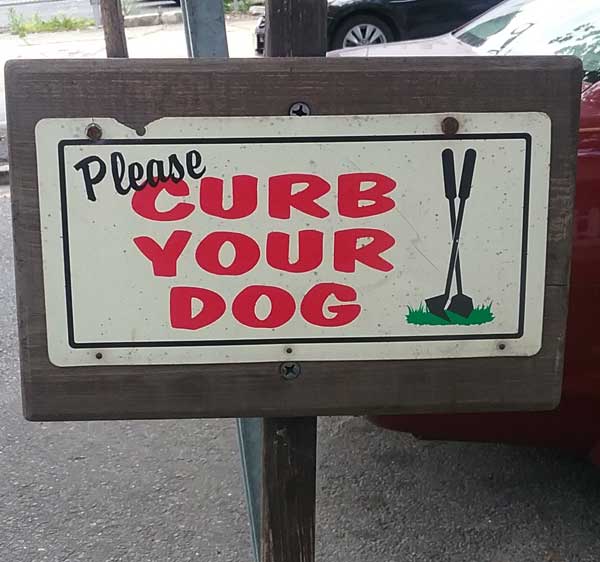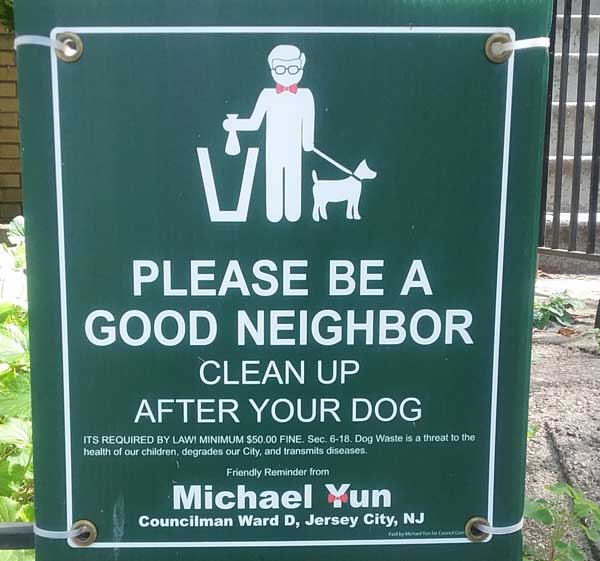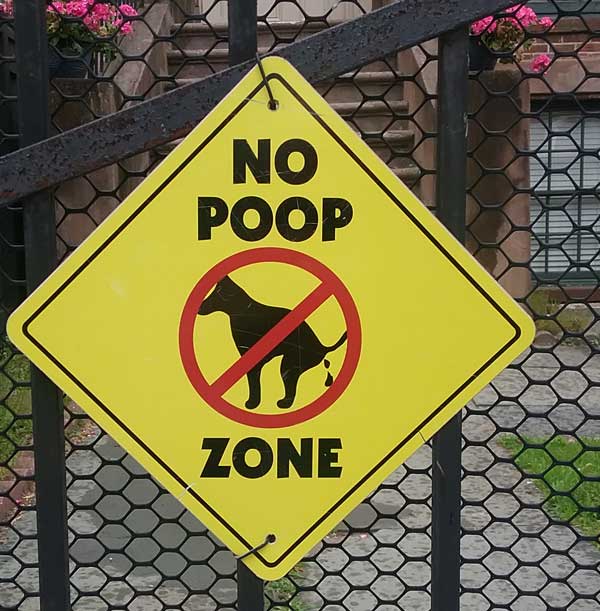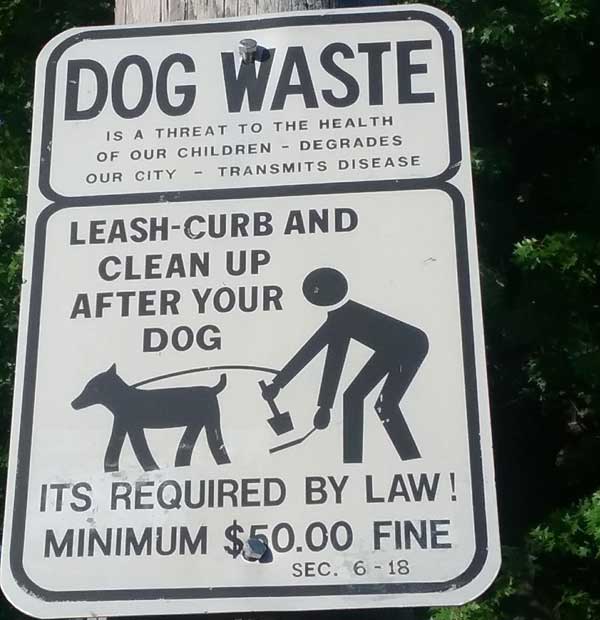Into every communicator’s life, a little dog poop must fall. That is, sometimes we have to talk about unpleasant but inevitable things. Not major crises – that’s a whole ‘nother kettle of fish – but life’s little annoyances: a registration glitch, a presenter who cancels due to illness, a failure of the donor thank-you automated email, that sort of thing.
When such things happen, how shall we communicate about them? Signs around my neighborhood illustrate four possible approaches.
Approach A above is the official-wordy-poorly-punctuated-threatening approach. There isn’t anything about this approach I could recommend.
(I do rather like the graphic. It’s karma, or something, that Bathroom Man now has to clean up after Bathroom Dog.)
Approach B is the polite-unobtrusive-obscure approach.

When I was young (like, 30), I thought that “curb your dog” meant “take your dog to the curb to do its business.” Shoot, maybe it does. But I since have learned that “curb” as a verb means “stop” or “hinder.” I wonder how many of the people who walk their dogs past this sign – including many immigrants and children – know that.
Another thing that makes Sign B obscure is that it’s about 4 inches by 6 inches. The graphic doesn’t help, either. I should bury my dog’s poop, maybe?
Approach C appeals to dog walkers’ better instincts.

Faithful readers and Jersey City residents will note the bowtie branding of my city council representative. This sign includes, in small print, some of the language from the official city sign, Approach A. But the message is so much nicer!
The graphic – well, I don’t know. It’s kind of, like, “Get Councilman Yun to dispose of your dog’s poop,” no?
Approach D is direct and humorous.

If you couldn’t read, you’d still get the message. ‘Nuff said.
I’d vote for C or D. The choice depends partly on what particular dog-poop-like minor irritation or snafu you’re dealing with.
More importantly, it depends on your audience. Will they respond better to a polite message or to a humorous one? Do they have time to read your long polite message, or should you get right to the point with an unmistakeable graphic?
If you’re not sure what approach will work best in your situation, let’s talk.


